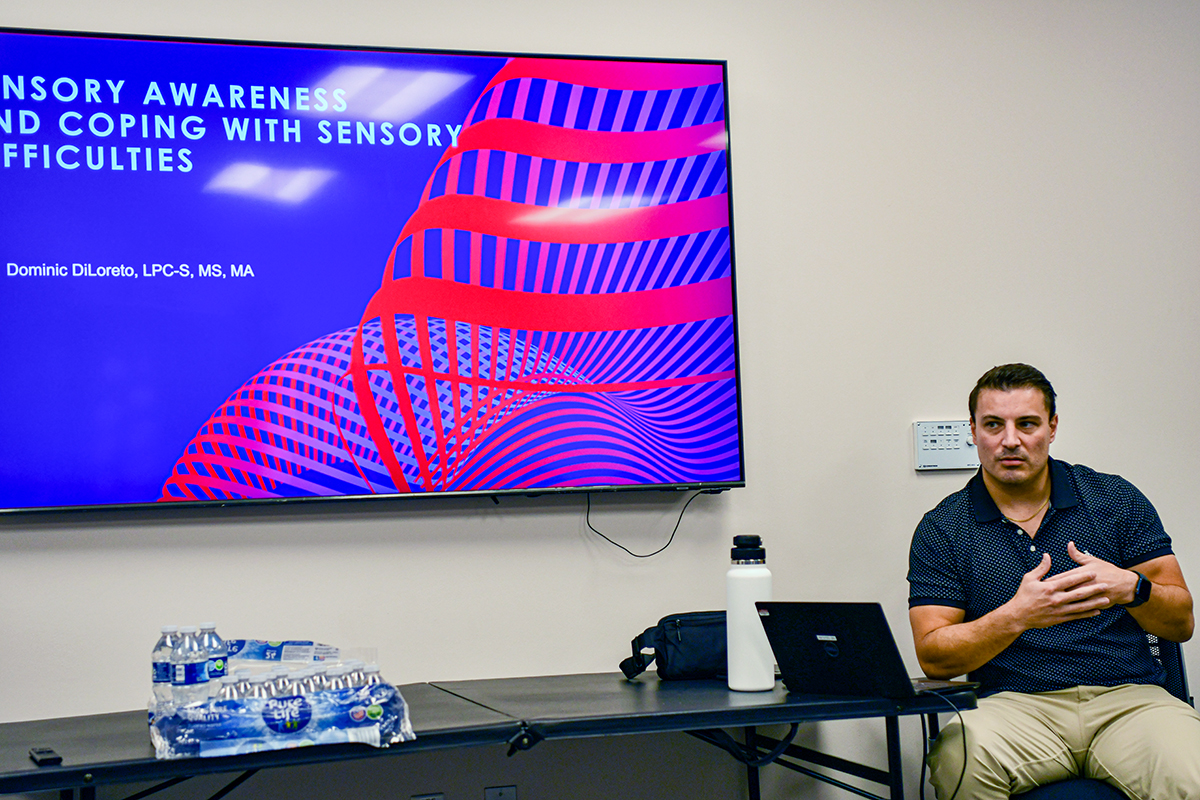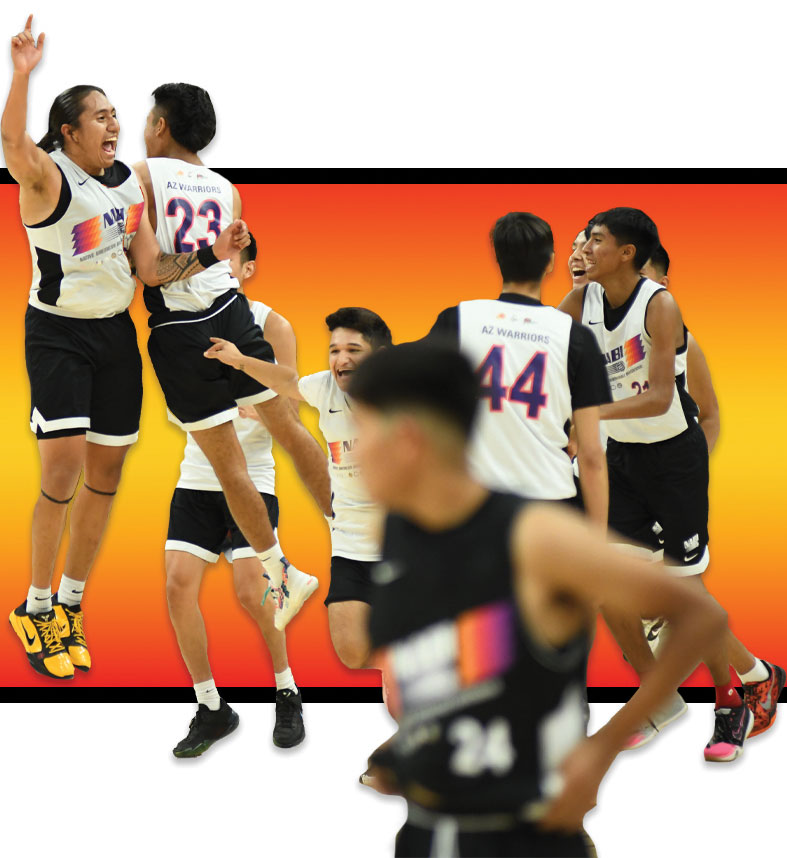VIEWS: 1098
July 20, 2025Men’s Health Awareness Month Features Sensory Awareness Class
“It’s OK to not be OK.”
That has been the focal point for the entire month of June as the Salt River Pima-Maricopa Indian Community hosted four in-person classes commemorating Men’s Health Awareness Month.
Dion Begay, senior physical fitness specialist from the Ske:g Himdag Ki:, hosted the classes which covered a wide array of topics and featured guest speakers.
On June 24, the fourth and final class covered an important topic: sensory overload.
The class was offered to the Community after Begay attended a webinar presentation on the same subject earlier this year.
“I attended this webinar in February, and I felt that this was very informational, and I thought this could be help for Men’s Health Month,” said Begay as he welcomed the room full of attendees.
Dominic DiLoreto, LPC-S, MS, MA, from SRPMIC’s Health and Human Services facilitated the class.
Sensory overload is defined as the condition in which the brain receives more sensory input than it can comfortably process. Loud noises, bright lights, strong smells and crowded places are some examples of triggers that can impact an individual’s overall health.
If an individual experiences sensory overload, they may feel headaches, dizziness, fatigue or physical pain.
These aspects and more were covered by DiLoreto, who constantly checked on guests attending the webinar presentation to ensure they were not experiencing sensory overload. “We’re all going to experience things a bit differently,” said DiLoreto. “That’s OK.”
DiLoreto shared that humans their own levels of sensory difficulties. Some are severely impacted, while others may be able to simply shrug it off.
“We do have individuals who are neurodivergent. They tend to experience the world a bit differently.”
During the presentation, DiLoreto explained how specific classrooms have begun to create sensory rooms, which help ease a student who may experience sensory overload from the bright classroom lights and loud school buses.
DiLoreto stated early plans to develop sensory classrooms within the Community are in the initial stages.
Throughout his presentation, DiLoreto detailed the nervous system and the various ways the body responds, specifically highlighting the ear’s central role in this process.
Discussing the vestibular system, DiLoreto described how an individual receives sensory information and processes it by utilizing receptors inside the inner ear.
“If someone is on a swing, that [will get processed] into three different relay stations. All of our movement and information we’re taking in is pretty complex [while on the swing].”
On a swing, the movement relays the information to the cerebellum, which coordinates eye control, head movement and posture. Continuing, the motion of being on a swing activates oculomotor nuclei, which steadies the eyes as the body and head are in motion. The spinal cord then influences muscle movement, while the thalamus and cortex interpret the input from the senses and play a role in motion, perception and spatial orientation.
Spatial orientation refers to the ability to perceive and understand one’s position and orientation.
DiLoreto also educated guests on being trauma informed, which is the understanding that many people have experienced trauma and that it can significantly impact their overall well-being. A key aspect of being trauma-informed, is to listen.
“By being trauma-informed and aware of sensory processing challenges, we can create an environment helps to foster a friendlier and more understanding workplace. We can foster some growth, learning and healing.”
Interested individuals looking to attend a future presentation at the Ske:g Himdag Ki: can call (480) 362-6800 for more information.







